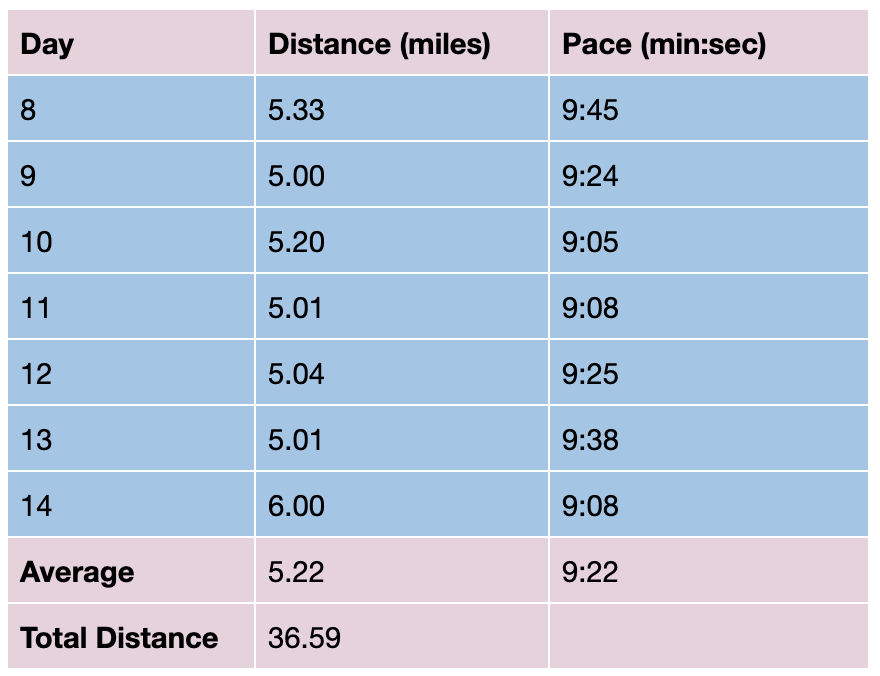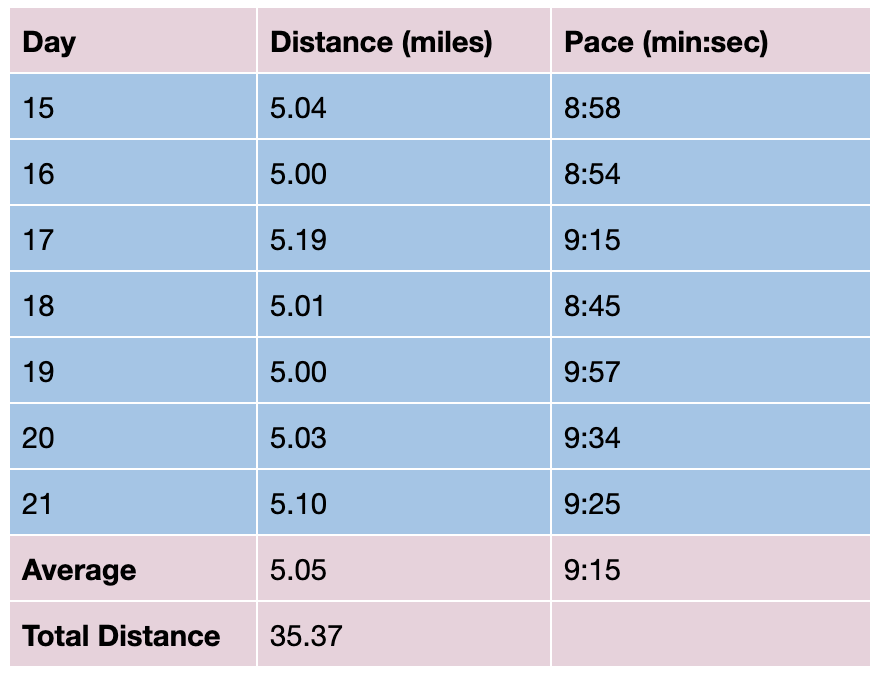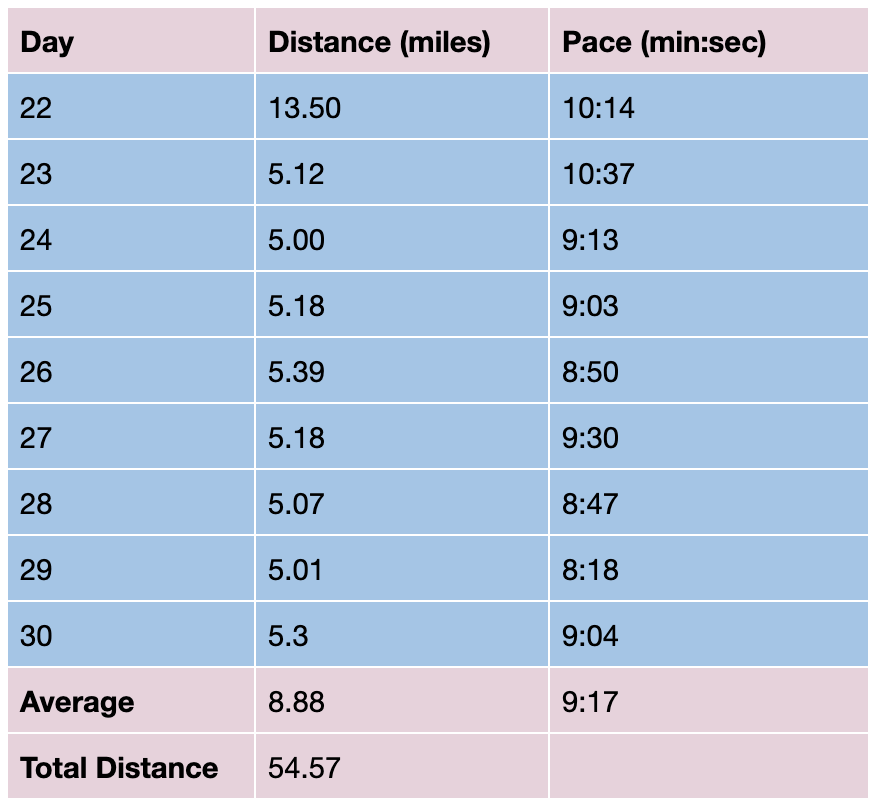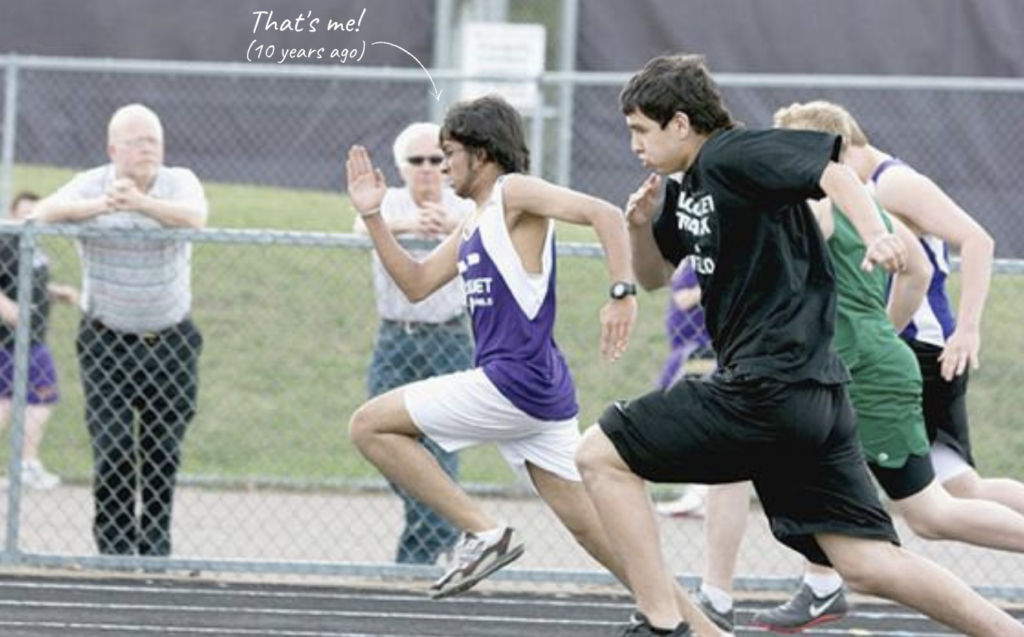“Let’s stop here for a drink”, I said panting as we turned on Boston Avenue.
“Here? At Dunkin Donuts?”, replied Saad, with similar exhaustion in his voice.
“Yeah, they don’t give out free water in Australia? Let’s go!”
That was a year ago during a 5-mile run with my friend Saad, who was visiting from Australia. To see him, I flew to Boston. On our first day together, I decided to invite him on a run, a pastime I had undertaken that summer in efforts to get more fit. Two miles in, we were both wheezing with thirst, our throats as dry as the Mojave desert. Our pace for the 5-mile run? A lousy 12 minutes 20 seconds per mile. Little did I know, that would be one of my last runs of the year.
While running consistently was never my forte, I could run short distances at an above-average pace. During my foreign exchange year, I ran varsity Track and Field (pictured above) for Cloquet Senior High School and did fairly well in any race shorter than one full circle around the track. Other than that, I was never good at long-distance running. Even though I pledged to run 500 miles in 2019, for whatever reason, I abandoned that goal that day in Boston.
Last month, the idea of running 5-miles every day without any days off came to me during an Instagram live workout session with ultramarathon runner and America’s badass David Goggins. Goggins, who’s endured unthinkable physical and mental obstacles during his 45 years on Earth, proclaimed that he never takes a day off. He talked about how our minds give up much sooner than our bodies. I took Goggin’s words to heart and decided to run at least 5-miles (or 8 kilometers) every day to practice consistency and to test his philosophy of not taking any days off.
Week 1
One of the best things about running as a form of exercise is that you don’t need any equipment. All you need is a pair of shoes. I got lucky and found mine at a thrift store for $10, and I was on my way.
The first day was actually kind of okay. I pushed hard and ran 5-miles at a pace of 11 minutes per mile. The next day, I got a little excited and ended up running one extra mile, resulting in total body fatigue on my way back. I had to walk the last mile finishing at a sluggishly average pace of 12:20 (min:sec). Okay, lesson learned. Stick with the plan.
The following days, I could see my pace improving, but it was still exhausting. I could feel the fatigue in my legs. However, as far as I could tell there were no signs of injury, so I continued on. I finished the week with an average pace of 10:38 and a total distance of 36.71 miles.

Week 2
Early on, I realized that elevation makes all the difference. Running in a city like Duluth, it’s impossible to avoid hills no matter which route you take. I was listening to Christopher McDougall’s book Born to Run during my 5-milers and coincidentally heard this part of the book while I was climbing a steep hill,
“Think Easy, Light, Smooth, and Fast. You start with easy, because if that’s all you get, that’s not so bad. Then work on light. Make it effortless, like you don’t give a shit how high the hill is or how far you’ve got to go.”
As soon as I adopted this mindset, hills weren’t an issue anymore. Right foot, left foot. That’s all there was to it. Pretty soon I could see all the running clichés in action: reaching a runner’s high, pounding the pavement, or entering a flow state. It became easier to leave the house every day, no matter how tired or long my day was and my pace was improving. I finished the week with an average pace of 9:22. A colossal 76 seconds better than Week 1!

Week 3
On the first day of Week 3, I ran my first sub 8-minute mile with a sub 9-minute average pace. This attempt of trying to run fast also lead to a sharp pain in both of my ankles which lasted for the rest of the week. Nevertheless, the pain wasn’t severe enough for me to skip a day. When Rich Roll asked Des Linden, the first American women to win the Boston marathon in 33 years, advice for amateur runners on his podcast, she said,
“Just train. Like it’s so simple. It’s right foot, left foot, repeat. We all do it. Put in the time. Do the work. And you’re gonna see the improvements. Just expect for it to take some time.”
Linden goes on to say that you don’t need fancy equipment like a GPS watch, heart rate monitor, or NIKE shoes. All smartphones can track runs and chances are the shoes you already own are good enough for running. You just need to keep showing up. This was enough motivation for me to finish Week 3 even with some aches and pains in my legs and by the end of the week, I was feeling fresh as a daisy. I finished the week at an average pace that was 7 seconds better than Week 2. “Man”, I thought to myself, “I am actually feeling really comfortable despite the sprained ankles.” I think I was ready for my next challenge: a half-marathon.

Week 4
Prior to this, I had only attempted to run 13.1 miles, the designated distance of a half-marathon, once. That was at the start of last summer. In the end, I remember telling myself, this is the single hardest physical thing I’ve ever done. I could barely walk the last 3 miles. So on the first day of Week 4, I decided to run a half-marathon to see if my body had acclimated.
I finished the half-marathon that day feeling ten times better than last year’s attempt. Not only was my time 22 minutes faster, but also I broke 5 personal records (pictured below). It was an indescribable feeling. That day, I truly understood the meaning of the phrase, “The only person you should try to be better than is the person you were yesterday.” It didn’t matter that more than 7,000 people ran the Garry Bjorklund Half Marathon in Duluth every summer, most of them faster than me. What mattered was that I am better than last year, last month, or even last week.

So, does running a half-marathon gave me a ticket to take a day off? Hell, no! Even though I suffered a severe attack of acid reflux from gulping down a glass of orange juice on an empty stomach the night before, my legs were moving just fine. I got up early the next day and finished my 5-miles for the day. This was also the week where I traveled to St. Cloud, a town 2 hours away from my home, for a weekend getaway. After running so consistently and making it a normal part of my day, I had a new perspective on exercising while traveling. For instance, finding out that St. Cloud is much flatter than Duluth spurred up a new kind of excitement or crossing the Mississipi River on foot instead of in a car now had a charm of its own.
I finished Week 4 plus two extra days, feeling relaxed and injury-free, covering a distance of 44.44 miles. On Day 29, I hit my fastest pace at 8 minutes 18 seconds per mile. Compared to the hot summer day in Boston, my pace was a whopping 181 seconds better. And all of this, without a single water break at Dunkin Donuts!

Going Forward
Now that running doesn’t feel like a chore, I am positive I will be able to run more consistently, at least 4-5 times a week. Going forward, I want to run distances even further than a half-marathon. I also want to focus more on strength training and other forms of cardio. Not that running was stopping me from doing that. On Day 17, I biked 8-miles before my run and incorporated bodyweight exercises and ab workouts most days of the week. Additionally, I want to compete in a few organized races and of course, the ultimate goal is to run a full marathon, a dream that seems more achievable every day.
What did I learn by running a distance equivalent to going to Minneapolis from Duluth in 30 days? I learned that David Goggins was absolutely right! Our minds give up much sooner than our bodies. I learned that especially in my 20s, I don’t need as much rest between workouts as I thought I did. I also learned that on days when I am really demotivated to go for a run, my motivation levels are always replenished after the first mile. Most importantly, I realized the truth in yet another running cliché, “No one ever said they feel worst after finishing a run”.

Even if you’ve never run a single mile in your life since grade school, I implore you to put on your sneakers and go out for a run today. There are simply too many benefits to running. Each mile of running burns off 100 calories. It helps you connect with your surroundings and your own thoughts on a more intimate level. For me, running also enabled me to finish an audiobook and listen to dozens of podcasts. You don’t have to run 5-miles every day like me. In fact, don’t even worry about the distance when you’re starting out. See how far you can go without taking a break. Is it 30 seconds? 2 minutes? No matter what that time is, you can always improve by a few seconds each day. As James Clear said in his book Atomic Habits,
“Habits are the compound interest of self-improvement. If you can get 1% better each day for one year, you’ll end up 37 times better by the time you’re done. What starts as a small win accumulates into something much more over time.”
